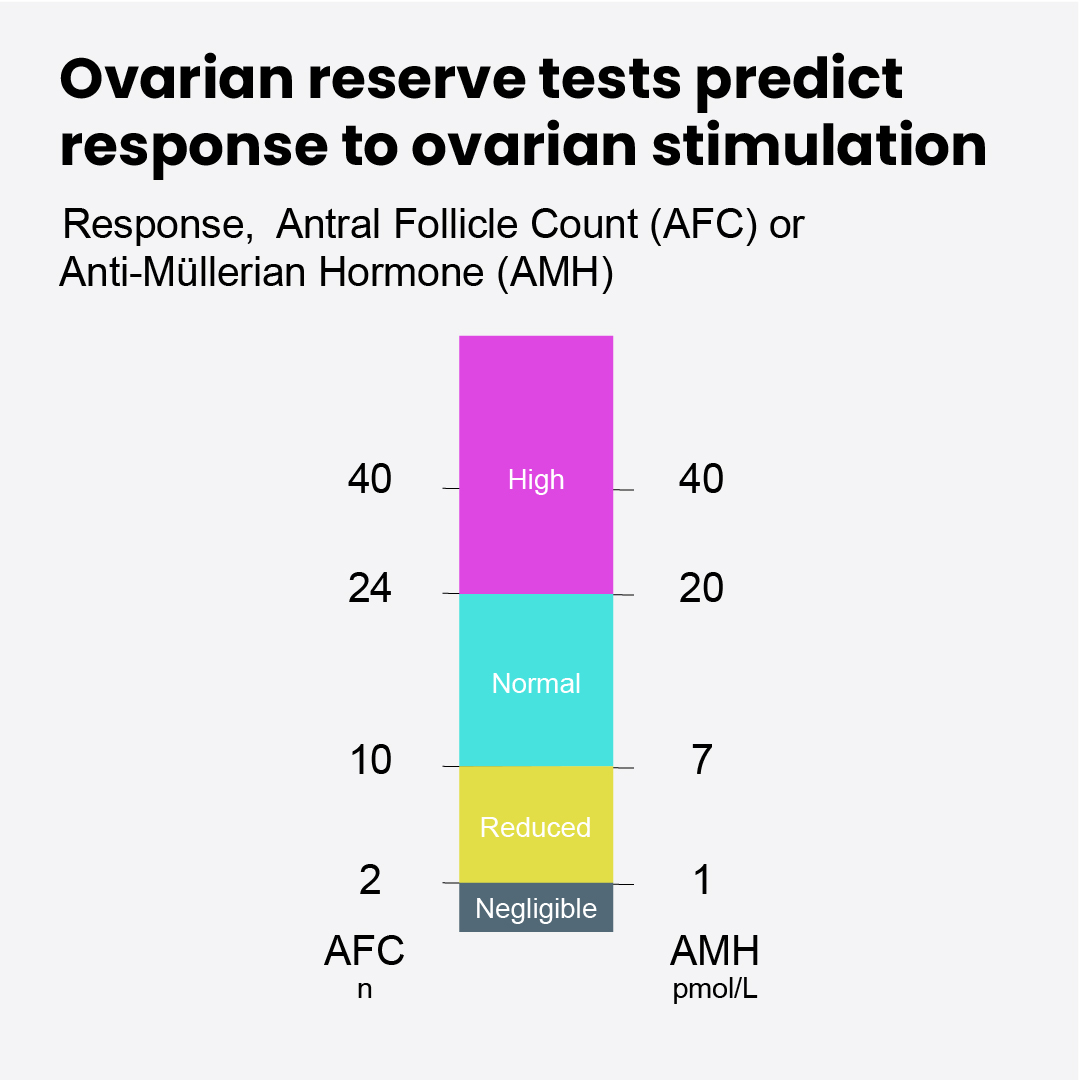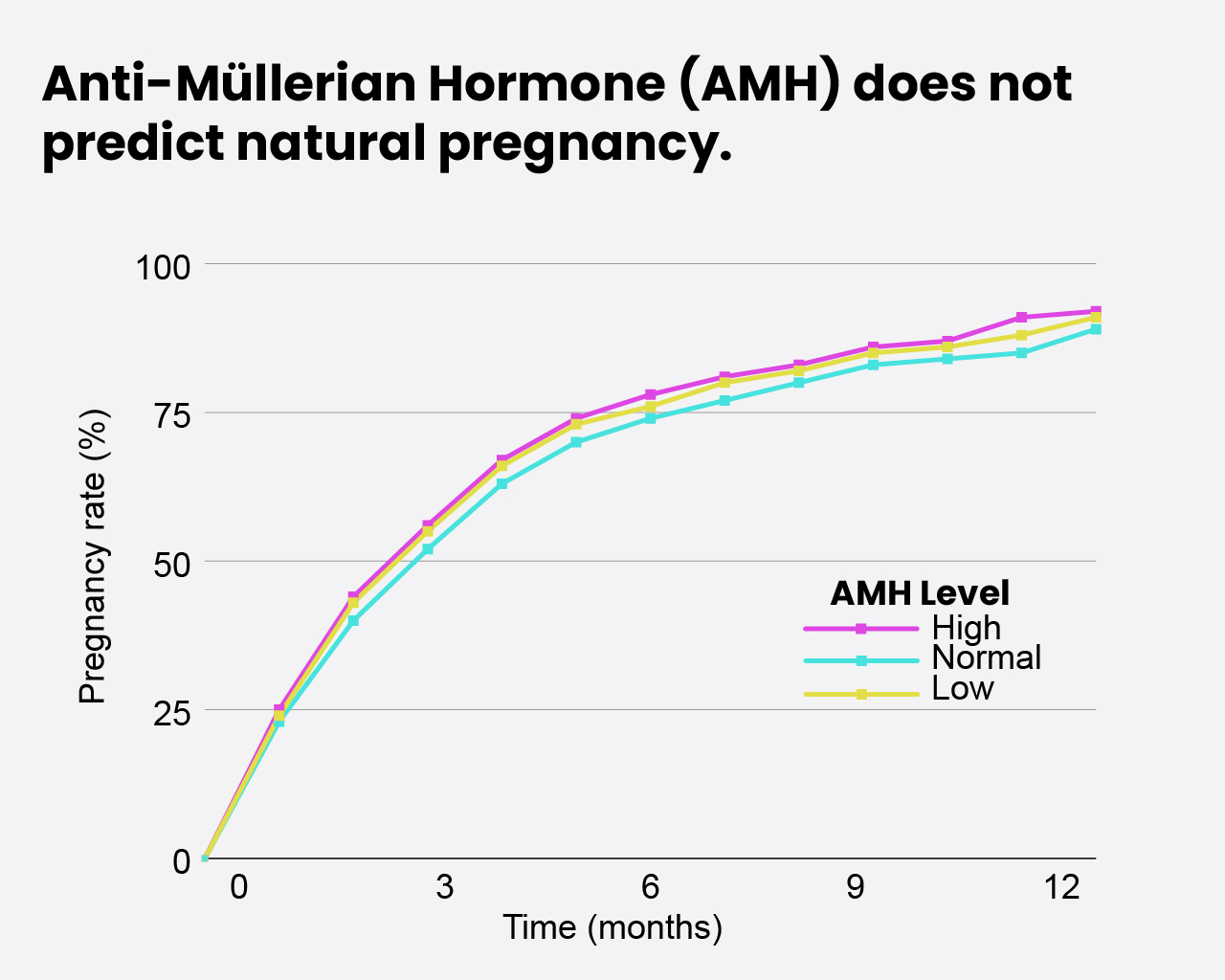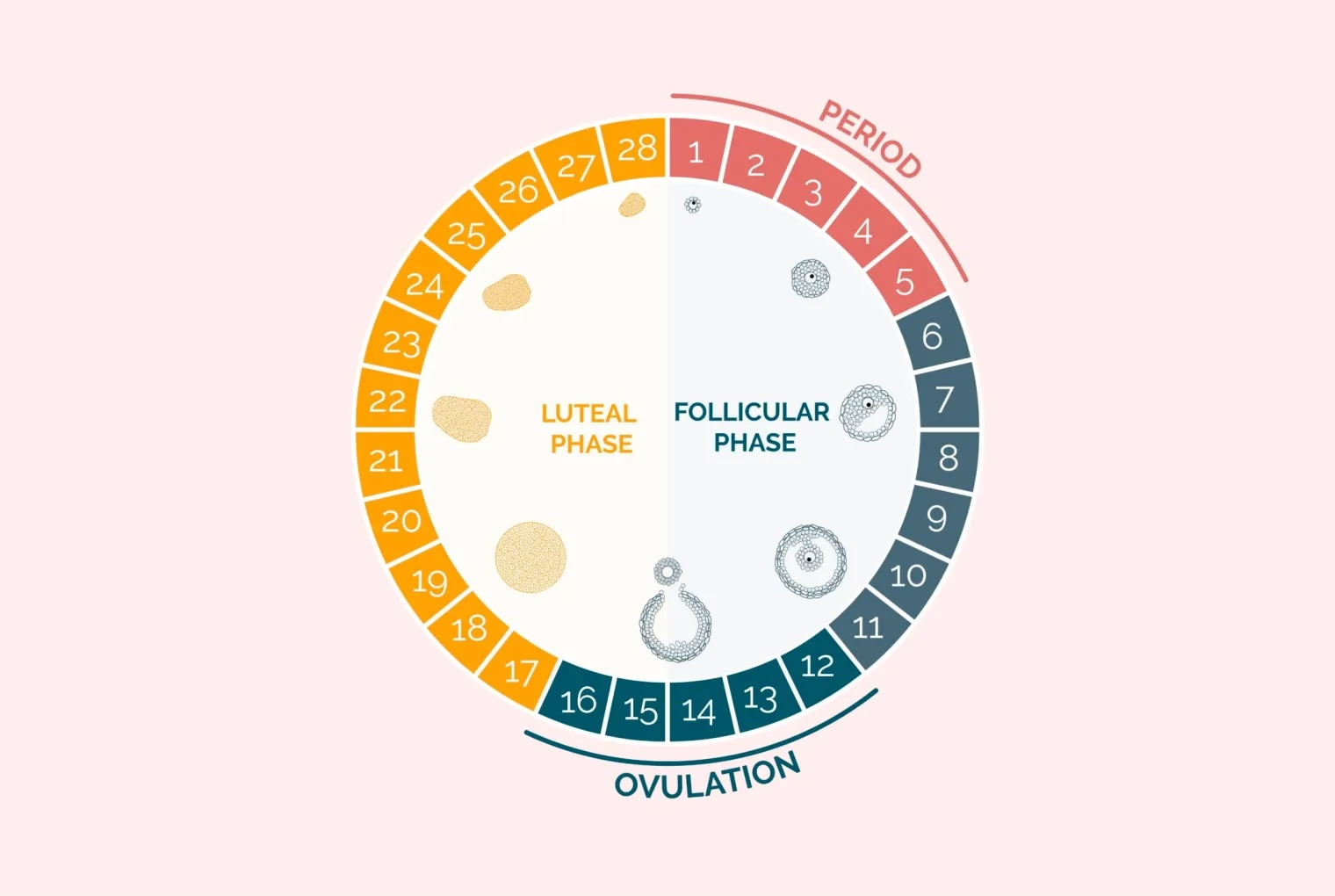Women are born with all the eggs they will ever have—about 2 million. Over time, these eggs diminish unless they develop and become one of the approximately 450 that are ovulated during a woman’s reproductive years. As women age, fertility declines along with the number of remaining eggs. The term “ovarian reserve” describes the number of eggs left in the ovaries. The AMH blood test is one way to estimate, in simple terms, how much “fuel” is left in the reproductive tank.
Normal AMH Levels
AMH levels are reported in two units: nanograms per milliliter (ng/ml) and picomoles per liter (pmol/L). When interpreting results, it is crucial to ensure the correct unit is being used. Historically, different laboratory assays for AMH have produced varying results. Currently, AMH can be measured using one of two standard assays, one of which consistently yields results about 10% higher than the other. Since AMH decreases with age, this factor must be considered when analyzing results.
AMH based predictions
It seems logical to assume that measuring ovarian reserve provides valuable insight into a woman’s fertility potential. Many believe AMH testing can predict how long a woman has left to conceive naturally and even estimate the timing of menopause. This assumption forms the basis of fertility testing—a quick blood test offering a glimpse into an individual’s reproductive future. But does research support these claims? Let’s explore what AMH can, and more importantly, cannot predict.
AMH and IVF
AMH is a strong predictor of ovarian response to stimulation. Up to 30% of women respond poorly to controlled ovarian stimulation, leading to fewer retrieved eggs and lower pregnancy rates compared to women of a similar age. On the other hand, women who over-respond may produce a higher quantity of lower-quality eggs and face a risk of ovarian hyperstimulation syndrome (OHSS).
Thus, AMH is useful for counseling couples and tailoring stimulation protocols. However, while AMH predicts egg yield, it does not indicate egg quality. Other factors, such as age, infertility cause, and duration of infertility, also play significant roles. Consequently, AMH is not a reliable predictor of pregnancy or live birth outcomes.
 Source: Nelson. Fertility and Sterility. 2013
Source: Nelson. Fertility and Sterility. 2013
The bottom line: AMH predicts ovarian response and egg yield but does not determine who will get pregnant or have a baby.
Natural fertility
What do AMH test results indicate about the likelihood of conceiving naturally? Unfortunately, very little. A study from Maryland, US, involving 1,202 women with varying AMH levels found no significant difference in natural pregnancy rates among those with low, normal, or high AMH levels.
 Source: Zarek. JCEM. 2015
Source: Zarek. JCEM. 2015
The bottom Line: AMH levels do not predict natural fertility chances. Women with low AMH are just as likely to conceive as those with normal or high AMH levels.
Long term fertility
Commercial fertility testing often markets AMH as a predictor of future fertility, but research does not support this claim. While AMH declines with age, along with ovarian reserve and overall fertility, a “normal” AMH result provides only a snapshot in time. It does not indicate how quickly levels will decline for an individual woman. AMH does not predict pregnancy chances for women currently trying to conceive naturally or undergoing IVF, making it unlikely to forecast future pregnancy success either.
These concerns raise an important question: how often should AMH be tested, and at what level should women be advised to worry? The World Health Organization’s criteria for screening tests indicate that AMH does not qualify as a reliable screening tool for present or future fertility.
The bottom line: A normal AMH level does not guarantee future fertility. Current evidence does not support using AMH as a predictive screening test.
Age of menopause
The average age of menopause is 51, though individual variation is significant. About 1% of women experience menopause before 40, while others reach it as late as 60. A study of 155 women suggested AMH might predict the timing of menopause. However, this was not reliable for women experiencing early or late menopause. The researchers concluded that AMH alone is insufficient for counseling women about the end of their natural fertility.
The bottom line: While AMH data on menopause prediction is intriguing, it is not a reliable tool for identifying women at risk of early menopause.
Cancer patients
The American Society of Clinical Oncologists recommends fertility discussions for all newly diagnosed female cancer patients, including referrals to specialists. Chemotherapy can be toxic to the ovaries, reducing ovarian reserve. Understanding how chemotherapy impacts fertility would be valuable for counseling women about early menopause risk and fertility preservation options. However, studies show that AMH levels before chemotherapy or subsequent AMH declines do not reliably predict the return of menstruation post-treatment.
The bottom line: AMH is not a useful predictor of chemotherapy’s impact on fertility.
Ovarian injury from surgery
Surgeries for conditions like endometriosis or ovarian cyst removal can damage surrounding ovarian tissue. AMH levels drop after surgery, but as previously mentioned, AMH does not accurately predict current or future fertility. Any surgical intervention should be carefully considered, weighing risks and benefits, particularly concerning fertility preservation. Women contemplating ovarian surgery should receive thorough counseling to make informed decisions.
The bottom line: Surgery can impact ovarian reserve, but AMH is not a reliable indicator of its effect on fertility.
Polycystic Ovary Syndrome (PCOS)
A PCOS diagnosis is made based on at least two of the following three criteria:
- Irregular or absent periods.
- Signs of increased male hormones (e.g., acne, excess hair growth, scalp hair thinning) or elevated hormone levels on blood tests.
- Polycystic ovaries on ultrasound.
AMH is not included in these criteria, but women with PCOS often have high AMH levels. Whether this results from increased follicle numbers or an inherent hormonal imbalance remains unclear. High AMH levels in PCOS do not indicate better ovarian reserve, as egg quality is often compromised. Some propose AMH as an alternative to transvaginal ultrasound for PCOS diagnosis, but its accuracy is only 60-70% compared to ultrasound.
The bottom line: While AMH is elevated in PCOS, it does not indicate superior ovarian reserve or replace ultrasound for diagnosis.
Summary
AMH is a useful tool for assessing ovarian reserve and predicting response to IVF stimulation. However, it does not reliably predict natural fertility, future fertility, menopause timing, or pregnancy outcomes. While it has applications in clinical decision-making, its limitations must be acknowledged, and it should not be used in isolation to guide reproductive planning.
Sources
- Loh. Anti-Müllerian hormone—is it a crystal ball for predicting ovarian ageing? Human Reproduction. 2011
- La Marca. Individualization of controlled ovarian stimulation in IVF using ovarian reserve markers: from theory to practice. Human Reproduction Update. 2014
- Zarek. Is Anti-Müllerian Hormone Associated With Fecundability? Findings From the EAGeR Trial. The Journal of Clinical Endocrinology & Metabolism. 2015
- Nelson. Biomarkers of ovarian response: current and future applications. Fertility and Sterility. 2013





